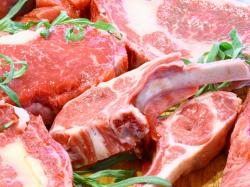Kansas Farmers & Ranchers Tackle Food Insecurity
March 15, 2011 | 2 min to read

TOPEKA, Kan. — It’s easy to think that in the land of plenty, everyone has consistent access to high-quality, nourishing food. Sadly, that is not always the case. Today, there are more than 2,818,747 people living in Kansas and 13.7 percent of those live in poverty. As of 2008, 14.2 percent of people were food insecure, of which 20.9 percent were children1.
The Kansas Beef Council (KBC) is proud to announce the beginning of this year’s Farmers Fighting Hunger campaign. In collaboration with the Feeding America food bank partners, Kansas Food Bank and Harvesters, KBC is looking to do its part in fighting hunger by hosting a county challenge amongst farmers and ranchers to raise funds for these two food bank entities. The resulting monetary donations will be used to purchase beef products for their respective backpack programs for children. Consumers can get involved and help with the “virtual food drive” now through May 1 by visiting www.kansasbeef.org to learn more or to make a monetary donation.
According to the United States Department of Agriculture (USDA), food security includes at a minimum:
•The ready availability of nutritionally adequate and safe foods;
•Assured ability to acquire acceptable foods in socially acceptable ways (that is, without resorting to emergency food supplies, scavenging, stealing, or other coping strategies).
Food insecurity is a household-level economic and social condition of limited access to food, while hunger is an individual-level physiological condition that may result from food insecurity.
Today, the U.S. population is more than 310 million people and is expected to reach 485 million by 2050 – meaning more food production will be necessary to meet the needs of a growing population. By continuing to innovate and advance what they do, cattle farmers and ranchers can provide nutritious food, protect the environment and provide consumers with a secure domestic supply of beef and other foods, both now and in the future.
Farmers and ranchers are committed to continuing to feed a growing population, by efficiently raising nourishing and wholesome food for families, and to fighting hunger by working with local food banks to help feed those who need it most.
The Beef Checkoff Program was established as part of the 1985 Farm Bill. The checkoff assesses $1 per head on the sale of live domestic and imported cattle, in addition to a comparable assessment on imported beef and beef products. States retain up to 50 cents of each dollar and forward the other 50 cents per head to the Cattlemen’s Beef Promotion and Research Board, which administers the national checkoff program, subject to USDA approval.
1 Feeding America Hunger Across the Nation Map, http://feedingamerica.org. Information taken from John Cook, Feeding America, Child Food Insecurity in the United States, 2006-2008.
Source: Kansas Beef Council
